Predictive analytics is a powerful tool that uses historical data, statistical algorithms, and machine learning techniques to forecast future outcomes and trends. By leveraging data insights, businesses can make more informed decisions, optimize operations, and enhance customer experiences. In today’s data-driven world, predictive analytics is becoming essential for businesses aiming to stay competitive and maximize efficiency.
What Is Predictive Analytics?
Predictive analytics is a branch of advanced analytics that involves using statistical models, machine learning, and data mining techniques to analyze current and historical data in order to make predictions about future events. Unlike traditional analytics, which focuses on understanding past data, predictive analytics helps businesses forecast future outcomes, identify potential risks, and uncover opportunities for growth. These predictions are based on patterns and trends found in the data, enabling businesses to make proactive decisions rather than reactive ones.
How Can Predictive Analytics Improve Business Forecasting?
- More Accurate Predictions: By analyzing large volumes of historical data, predictive analytics can provide businesses with more accurate forecasts for sales, demand, customer behavior, and market trends.
- Identifying Trends: Predictive analytics helps businesses identify emerging trends and patterns that might otherwise go unnoticed, giving them a competitive edge in the market.
- Optimizing Inventory and Resource Allocation: With more accurate forecasting, businesses can optimize their inventory management, production schedules, and resource allocation, reducing waste and improving efficiency.
- Risk Mitigation: Predictive models can help businesses anticipate potential risks, such as market downturns, supply chain disruptions, or customer churn, allowing them to implement mitigation strategies ahead of time.
- Enhancing Customer Experience: Predictive analytics enables businesses to better understand their customers’ preferences, behaviors, and needs, allowing for more personalized marketing, improved product recommendations, and better customer service.
What Are the Best Predictive Analytics Tools?
- IBM SPSS: A powerful analytics platform that provides predictive analytics capabilities through statistical analysis and data mining techniques, ideal for businesses that need advanced modeling and data visualization tools.
- Microsoft Azure Machine Learning: A cloud-based platform that offers machine learning tools for building predictive models and integrating them into business applications. It’s ideal for companies looking to scale their predictive analytics efforts.
- Google Analytics: While primarily a web analytics tool, Google Analytics also offers predictive insights about user behavior, which can help businesses forecast trends, enhance marketing strategies, and improve customer engagement.
- SAS Predictive Analytics: A robust analytics tool that helps businesses uncover hidden patterns in data and predict outcomes. It’s known for its user-friendly interface and powerful capabilities in industries like healthcare, finance, and retail.
- RapidMiner: A data science platform that provides powerful predictive analytics tools for businesses of all sizes, allowing them to integrate machine learning, data preparation, and visualization into one seamless solution.
How to Interpret Predictive Analytics Results?
- Understand the Variables: The first step in interpreting predictive analytics results is understanding the key variables and data points used in the model. This will help you assess the relevance of the insights and whether the data is accurately representing the business problem.
- Look for Predictive Patterns: Identify the patterns and trends revealed by the predictive model. Are there consistent behaviors or outcomes that can help inform future decisions?
- Validate the Predictions: Compare the predictions made by the model with actual outcomes to determine how accurate the model is. Continuously validate and adjust the model based on real-world data.
- Make Informed Decisions: Use the insights from predictive analytics to make proactive decisions, such as adjusting inventory levels, revising marketing campaigns, or improving customer service strategies.
- Communicate Insights Effectively: Present the predictive results in a way that is easy to understand for key stakeholders. Use visualizations, charts, and graphs to make complex data more accessible and actionable.
What Is the Future of Predictive Analytics?
- Integration with AI and Machine Learning: As AI and machine learning technologies continue to evolve, predictive analytics will become even more powerful. These technologies will help businesses make faster, more accurate predictions by continuously learning from new data.
- Increased Use in Real-Time Analytics: The future of predictive analytics will see more businesses using real-time data to make instantaneous predictions. This will be especially beneficial for industries like retail and finance, where timely decisions are critical.
- Greater Accessibility for Small Businesses: As predictive analytics tools become more affordable and user-friendly, small and medium-sized businesses will have greater access to advanced forecasting and decision-making capabilities.
- Predictive Analytics for Personalization: Predictive analytics will play a key role in personalizing customer experiences. By analyzing individual customer behaviors and preferences, businesses will be able to deliver tailored products, services, and marketing campaigns.
- Advanced Visualization and Reporting: As predictive analytics evolves, businesses will have access to more sophisticated tools for visualizing and interpreting predictive results. This will make it easier for decision-makers to understand and act on data-driven insights.
Unlock the Potential of Predictive Analytics for Business Growth
Predictive analytics offers businesses the ability to forecast future trends, mitigate risks, and make data-driven decisions. By leveraging the right tools and strategies, businesses can gain a competitive edge, optimize operations, and enhance customer satisfaction. As predictive technologies continue to advance, the future holds even more exciting opportunities for businesses to unlock the full potential of their data and improve overall performance. Start using predictive analytics today to drive smarter business decisions and unlock growth opportunities for tomorrow.











